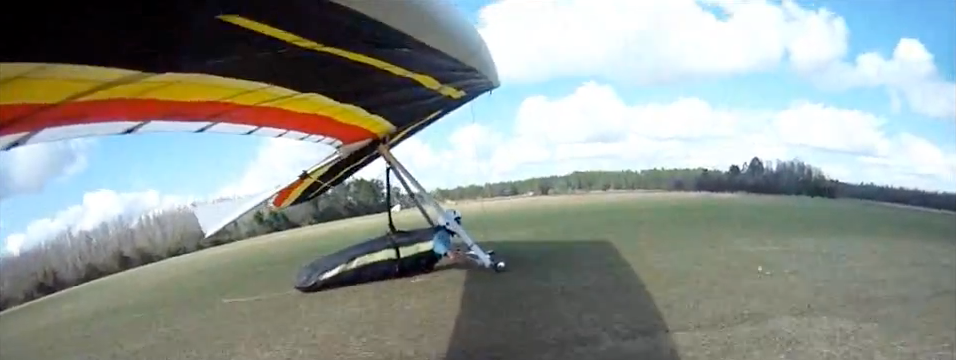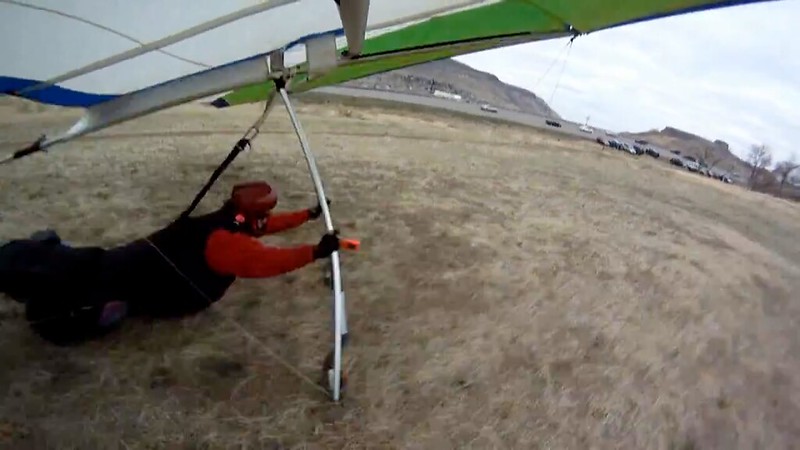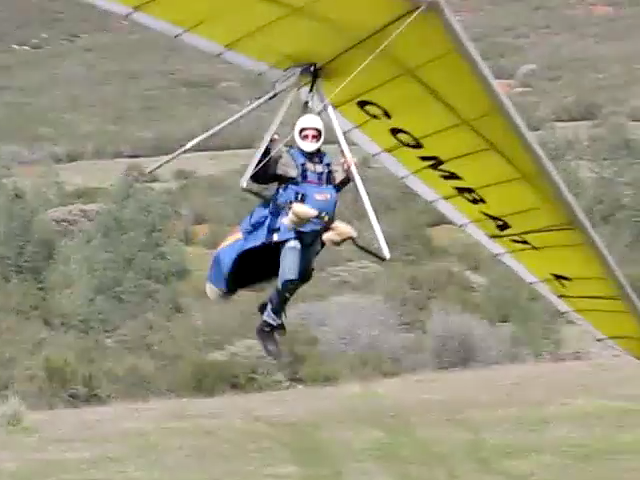Your thoughts on Whacks requested
davin - 2013/12/05 21:57:28 UTC
I've wondered if anyone has attempted to make a lightweight fairing like wheel pant seen on GA aircraft for just this reason. Anyone seen anything like this before?
For the vast majority of us - myself included - when we're way the hell up there over flat ground there's no noticeable difference between going up at two hundred feet per minute and going down at two hundred feet per minute if we don't have varios. We gotta look at ACTUAL differences 'cause our biological senses aren't very well evolved for noticing things in the air.drachenjoe - 2013/12/05 22:45:03 UTC
Germany
I guess there will be no noticeable difference in drag because of our low speed...
Almost always meaning a failed attempt at a whipstall landing.The WW skids are OK to save the basetube from some scratches, but no help in a whack.
I really do not understand why eight inch wheels aren't mandatory for comp pilots so that nobody's rewarded for not or punished for using them. Meet head douchebags like Bill Moyes and Davis Straub have never had the slightest problem mandating safety equipment that only serves to dump, crash, injure, and kill pilots.The Aeros skids seem to be slightly better...
I really do not understand why some non-comp pilots do not use eight inch wheels...
And:Dennis Wood - 2013/12/05 23:35:55 UTC
Suffolk, Virginia
skids only work when the angle that you approach the ground is very shallow. ain't gonna matter much what size wheels are if you pancake.
- parachutes ain't gonna matter much if you tumble under a couple hundred feet
- helmets ain't gonna matter much if you can't abort a lockout 'cause you're using the total shit that Currituck sells for release equipment
- your ratings, special skills, appointments, airtime, experience, reaction time, well-trained brain, popularity ain't gonna matter much if you're standing on your tail in a monster thermal connected to a Dragonfly with a pro toad bridle and Rooney Link at 150 feet
- HGMA certified glider ain't gonna matter much if your carabiner isn't as connected when you're running off the ramp as it was when you did your Kitty Hawk Kites approved hang check a minute and a half ago
YEAH DENNIS!!! ESPECIALLY THE FLARE PART!!! I JUST HAVEN'T HEARD ANY SANE REASON WE SHOULD BE DOING THE FLARE.to guarantee shallow angle, just approach the ground (final) with extra speed, then round-out to parallel ground, till flare. (ANY OF THAT SOUND FAMILIAR???)
You don't hafta be a great pilot to have an outcome of a flight changed by a little crappier performance. I'd argue that a crappy pilot is more likely to benefit from performance than a great pilot. Crappy pilots such as myself are more likely to dope off and drift back too far on the ridge or put themselves in situations when they need every fraction of a glide point they can get to make a field because they pushed their luck a bit too much.Matt Christensen - 2013/12/06 00:50:01 UTC
If you are such a great pilot that the added drag from wheels is going to change the outcome of your flight, you don't need them.
Glide performance is expensive and it shouldn't be squandered with cheap crap like Quallaby releases and unnecessarily draggy wheels.
Bullshit. One hundred percent of pilots will have better outcomes - often, after a number of flights and/or in marginal situations, WAY better outcomes - from a bit of extra performance.For 99% of pilots that isn't the case.
Bullshit. Yeah a pilot making better decisions and having more skill can almost always kick the ass of someone on a better performing glider but he can't kick his own ass on a better performing glider.Except for the very elite pilots (and even for them much of the time) it is decision making and pilot proficiency that makes all the difference.
ALL the time?For the rest of us, the drag from a set of modern wheels has an immaterial impact on the outcome of our flights.
Why should there be any difference? We've all demonstrated in the course of getting our ratings that we're perfectly capable of nailing any standup spot landing we feel like, right? So what's it matter what we do or don't have on the basetube?If you have to use them, you will be better of with the right set of wheels (not WW wheels) than you will with any commercial skids IMHO.
Because you CAN use them for every landing 'cause you're always coming down at an airport or because you NEED TO use them frequently on takeoff after your Rooney Link increases the safety of the towing operation?I will have wheels on my glider for the foreseeable future, including my T2C. If for no other reason than the fact that I do a lot of aerotowing...
Name some Capitol area sites at which you can't wheel land just as easily as you can at Ridgely or Manquin.
You DID pull off a good landing. You pulled off a much better, safer, easier, funner landing than you would have with the usual whipstall bullshit....but I have actually been glad that I had them on a couple of landings. I slipped a turn into a tight LZ on an XC flight in Delaware once and came mocking in low... nice smooth landing field and probably had enough room to pull off a good landing, but made a quick decision to roll it in and was glad I did.
Ever kiss your shoes after nailing a no stepper?Dusted off and kissed my wheels as I was packing up.









